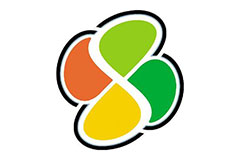Koreisha Mark, a Sign of Experience - Vol.394
One of the things Japan is very famous for is the country's rapid economic recovery and development after the end of World War II. In the decades that followed, Japan experienced a truly astonishing, steep rise in the living standard. This was powered by the growing economy, salaries increase and great advance in the quality and accessibility of universal healthcare.

In the early years (1947 - 1949), a population growth accompanied the economic one. Later on, decreased fertility rates, abortion accessibility, and prolonged life expectancy caused Japan to become the world's number two aging nation, behind Monaco only.
Old School Driving
The aging population meant a reduced workforce and an increased financial pressure on the healthcare system. More budget spending on health and lower productivity within the economy was a combination which got Japan's government concerned and thinking.
However, another issue arose, and it was a rather unexpected one. Operating motor vehicles is something most of us take for granted, but when over a quarter (25.9%) of the nation's drivers are aged 65 and over, certain traffic problems may occur.
Japan was facing a great increase in traffic accidents caused by elderly drivers. Many of those accidents caused significant material damage, and more than few resulted in fatalities as well. Suddenly, the traffic authorities had a big problem to solve. They found themselves in a situation where former common traffic accident victims became perpetrators.
Old age alone is not a good reason to take away someone's driver's license. So, this simple solution was off the table. What Japan needed was a stricter control over elderly drivers' participation in traffic. New rules were implemented in an attempt to find a balance between the people's right to drive and a need for increased safety in traffic.
Koreisha Mark - Elderly Driver's Identification
An "aged driver sign" (korei untensha hyoshiki) or Koreisha Mark, for short, was introduced in 1997 by Japan's traffic authorities. Shaped as a teardrop and colored in orange and yellow, the sign was designed with a purpose of being displayed at the front and the back-end of vehicles operated by drivers aged 75 and over. Those drivers who were over 70 and could, for different reasons, affect the traffic, were also required to display the mark.
Furthermore, in 2009 cognitive functions tests were introduced for elderly drivers. There were even some suggestions that these tests should be conducted on a monthly basis. The introduction of tests made some senior drivers decide to give away their driver's license voluntarily.
Recently, as a result of conducting regular cognitive tests, 2.7% of Japan's elderly drivers have been found to be at risk of dementia. If we put this in numbers, Japan might be facing 30,000 people with dementia driving on the country's roads.
The Koreisha Mark produced good results and in 2011 it was remodeled to resemble a four-leaf clover and green color was added to the existing orange and yellow. Some drivers even take pride in displaying the mark as they see it as a sign of experience.
The Future Solution
Japan is a major automobiles manufacturer, with a significant portion (9%) of its workforce finding employment in the industry. For this reason, asking older people to abandon driving and therefore cars, has not been seen as the best possible solution. However, in this technologically-advanced nation, hopes are high for the future.
The introduction of automated cars is seen as a win-win opportunity for both the manufacturing sector and elderly drivers. Such a convenient transportation form is expected to cause high demand among the car-loving elderly.